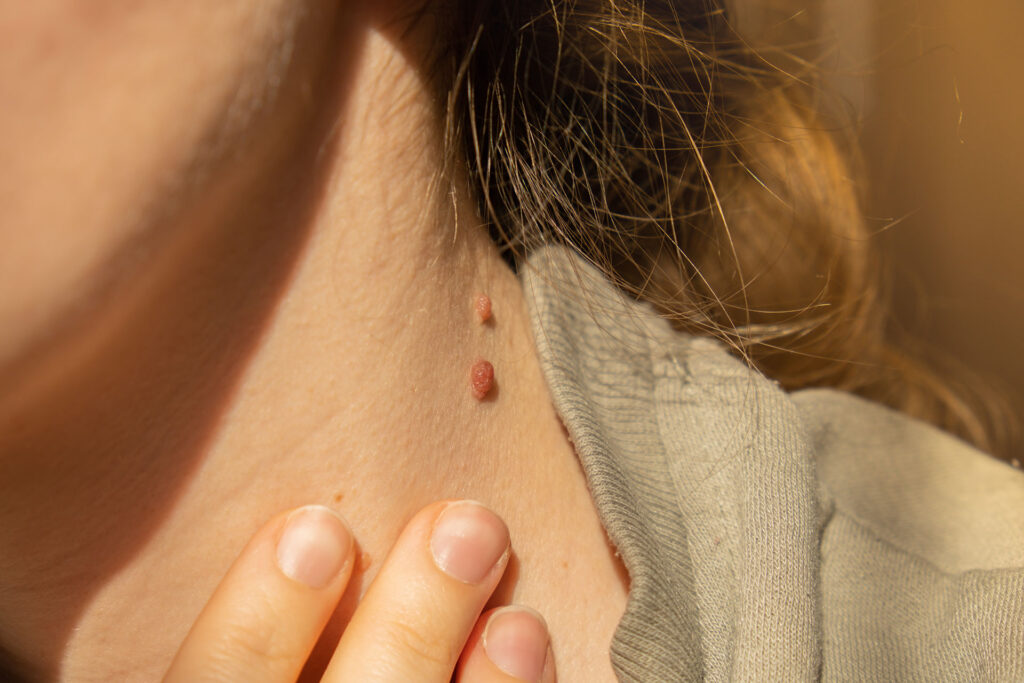Ever noticed a weird mole or dark spot and thought, “Should I be worried?” You’re not alone. The truth is, early detection of skin cancer saves lives, and yes—you can absolutely do a basic check for it right at home. It’s easier than you think, and all it takes is a mirror, a few minutes, and a little awareness.
Understanding Skin Cancer
What is skin cancer, exactly? It’s when abnormal skin cells grow uncontrollably, often due to sun damage. There are three major types you need to know:
- Basal Cell Carcinoma (BCC): Slow-growing and the most common.
- Squamous Cell Carcinoma (SCC): Can spread if untreated.
- Melanoma: The deadliest, but also the rarest—if caught early, survival chances are high.
Risk Factors Include:
- Lots of sun exposure or tanning bed use
- Fair skin or light eyes
- Family history of skin cancer
- A large number of moles or freckles
Signs and Symptoms to Watch For
The ABCDE Rule of Melanoma
Memorize this—it’s your first line of defense.
- A – Asymmetry: One half doesn’t match the other
- B – Border: Irregular, jagged, or blurred edges
- C – Color: Varies in shade (brown, black, pink, even blue)
- D – Diameter: Larger than 6mm (about the size of a pencil eraser)
- E – Evolving: Changes in size, color, or shape
Non-Melanoma Clues
- Wounds that won’t heal
- Raised red patches or bumps
- Rough, scaly spots that bleed
Preparing for a Skin Self-Exam
Before you start playing detective with your skin:
- Do it in good lighting (natural light works great)
- Use a full-length mirror and a hand mirror
- Grab a chair and maybe even a friend or partner for hard-to-see areas
Don’t forget to check:
Scalp, between fingers and toes, behind ears, buttocks, soles of feet—yes, everywhere.
Step-by-Step Guide to a Skin Cancer Self-Check
Step 1: Examine Your Face and Scalp
Start at the top. Look closely at your nose, cheeks, lips, and around the eyes. Use a blow-dryer and mirror to inspect your scalp.
Step 2: Inspect Your Torso and Back
Stand in front of a mirror. Lift your arms, turn side to side. Use a hand mirror to get a look at your upper and lower back.
Step 3: Look at Arms and Hands
From shoulders to fingertips, don’t skip anything. Check your nails and palms too.
Step 4: Check Legs, Feet, and Toes
Sit down and look at your thighs, shins, calves, soles, heels, and between your toes.
Step 5: Use a Mirror for Hidden Areas
Check under breasts, buttocks, groin, and genitals. These areas might seem unlikely, but skin cancer doesn’t discriminate.
Tracking and Documenting Changes
Take clear, dated photos of any moles or spots.
Use a mole map—a body chart to mark positions and changes over time.
Check yourself once a month. If anything changes, grows, itches, or bleeds—get it checked.
When to See a Doctor
If you notice any of these, don’t wait:
- Sudden changes in a mole
- Bleeding or crusting
- Pain or itchiness that persists
- A sore that won’t heal in 3 weeks
Pro tip: Even if nothing seems wrong, see a skin cancer physician yearly for a full skin check.
Tools and Apps to Help
Tech can be your friend:
- Miiskin – Tracks moles with AI
- SkinVision – Assesses mole risk from a photo
- MoleScope – Works with dermatologists for professional monitoring
But remember—no app replaces a doctor.
Best Probiotics for Gut Health: A Comprehensive Guide to Restoring Digestive Balance
Skin Cancer Myths Debunked
- “Only pale people get skin cancer.” – Wrong. It affects all skin tones.
- “It’s just a mole.” – Sometimes. But a changing mole can be cancer.
- “Tanning beds are safer than the sun.” – Nope. They’re worse.
Skin Cancer in Different Skin Tones
Skin cancer in people with darker skin is often found later, and in unusual areas like palms or soles. Don’t assume you’re safe because you have melanin. Know what to look for, especially dark lines under nails or patches in hidden spots.
Teaching Your Family to Self-Check
Turn it into a monthly habit—like checking the smoke detector.
Teach your kids, parents, and even roommates.
More eyes = more chances to catch something early.
Catching skin cancer early is completely in your hands—literally. Make skin checks a part of your monthly routine. It’s simple, it’s quick, and it might just save your life. Be smart. Be safe. Be sun-smart!
FAQ:
How often should I do a self-check?
Ideally, once a month. Early detection = better outcome.
Can skin cancer go away on its own?
No. It can get worse and spread. Always seek treatment.
What does a cancerous mole feel like?
Most don’t hurt. Watch for changes in texture, color, or size.
Is it normal for moles to change?
Not always. Some change over time, but sudden shifts are a red flag.
Can I use AI apps instead of seeing a doctor?
Apps can help, but never replace a professional diagnosis.
